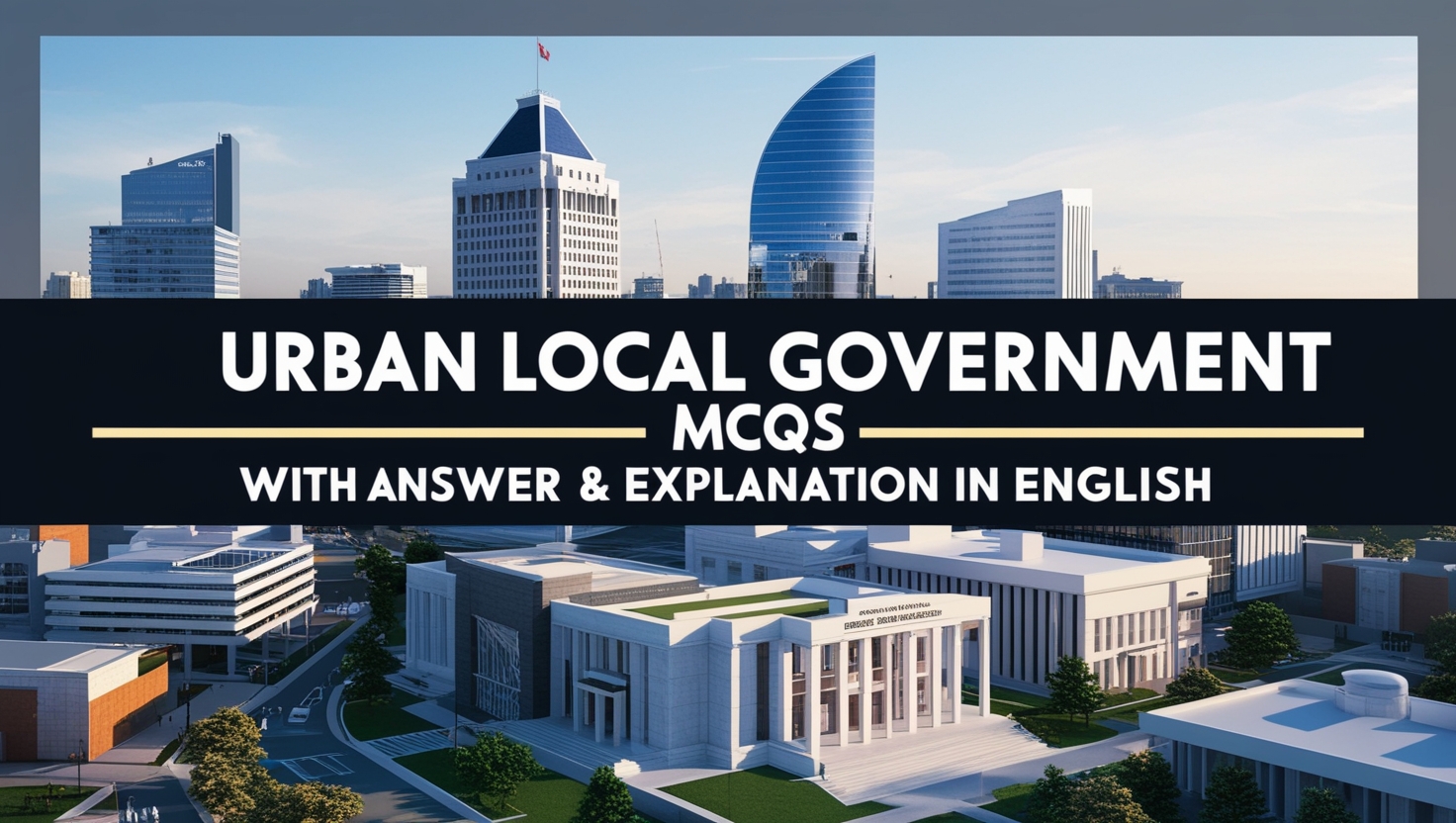
The Urban Local Government plays a crucial role in managing city infrastructure and services. In this article, we explore Urban Local Government GK MCQs with Answer & Explanation in English, helping readers understand the key aspects of urban governance through insightful questions and detailed explanations. This will not only enhance your knowledge of urban administration but also help in competitive exams.
1. Which among the following schedules is related to the responsibilities of Municipalities?
- 9th
- 10th
- 11th
- 12th
Show Answer
Answer: 12th
The Twelfth Schedule was added by the 74th amendment and enlists the subjects under Municipalities or urban local government.
2. What is the number of items in the 12th schedule added by the 74th Amendment of the Constitution?
- 11
- 16
- 18
- 20
Show Answer
Answer: 18
The 74th amendment added the 12th schedule in the constitution comprising 18 items that fall under the purview of municipalities, such as urban planning, regulation of land use, economic and social development planning, roads, water supply, public health, sanitation, and more.
3. Which of the following is/are correct statements about the Port Trusts in India?
1 A port trust created by an Act of state legislatures
2. Each port trust has the status of an urban body such as Municipalities for providing civic amenities
Choose the right option:
- Only 1
- Only 2
- Both 1 and 2
- None of the above
Show Answer
Answer: Only 2
The first statement is incorrect. A Port Trust in India is created by an Act of Parliament, and the major ports are controlled by the Major Port Act 1963. However, the second statement is correct. Each port trust has the status of an area-based Urban body such as Municipalities for providing civic amenities.
4. Which of the following are types of urban local government?
- Municipal corporation
- Cantonment board
- Port trust
- All of the above.
Show Answer
Answer: All of the above.
Eight types of urban local governments function in India, including Municipal corporation, Municipality, Notified area committee, Town area committee, Cantonment board, Township, Port trust, and Special purpose agency.
5. Where was the first municipal corporation set in India?
- Madras
- Calcutta
- Bombay
- Delhi
Show Answer
Answer: Madras
The first municipal corporation in India was set up in Madras in the year 1688. Later in 1726, municipal corporations were also set up in Bombay and Calcutta.
6. Which document is often referred to as the ‘Magna Carta’ of local self-government?
- Lord Ripon’s Resolution of 1882
- Lord Mayo’s Resolution of 1870
- Both A and B
- None of the above
Show Answer
Answer: Lord Ripon’s Resolution of 1882
The Resolution of 1882 drafted by Lord Ripon is considered the ‘Magna Carta’ of local self-government in India since it laid the foundation of local self-government.
7. Which of the following ministries deal with the subject of ‘urban local government’ at the Centre?
- Ministry of Housing and Urban Affairs
- Ministry of Home Affairs
- Ministry of Defence
- All the above.
Show Answer
Answer: Ministry of Housing and Urban Affairs
The subject of ‘urban local government’ is handled by the Ministry of Housing and Urban Affairs.
8. What kind of municipalities are provided for in Part IX-A of the Constitution of India?
- Nagar panchayat
- Municipal council
- Municipal corporation
- All of the above.
Show Answer
Answer: All of the above.
Under the 74th Amendment Act of 1992 and Part IX-A of the Constitution of India, the following three types of municipalities are to be constituted in every state: a nagar panchayat for a transitional area, a municipal council for a smaller urban area, and a municipal corporation for a larger urban area.
9. Who can specify a transitional area, a smaller urban area, or a larger urban area in a state?
- Chief Minister
- Governor
- President
- None of the above
Show Answer
Answer: Governor
The Governor is responsible for specifying a transitional area, a smaller urban area, or a larger urban area, based on factors such as population, density, revenue generation, percentage of employment in non-agricultural activities, economic importance, and other relevant factors.
10. Who served as the Chairman of the National Commission on Urbanisation?
- Girijapati Mukharji
- Rafiq Zakaria
- C.M. Correa
- K.N. Sahaya
Show Answer
Answer: C.M. Correa
C.M. Correa headed the National Commission on Urbanisation from 1985 to 1988.







